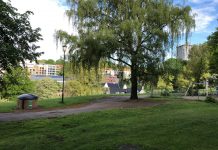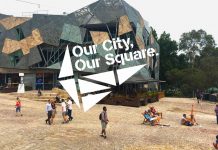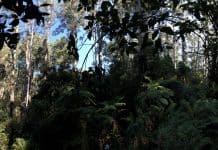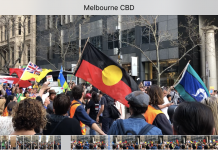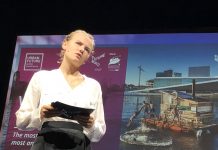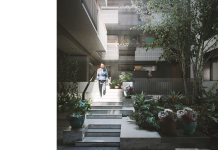Nightingale Village, the ambitious development being undertaken by seven architecture practices in Brunswick, Melbourne, has won overwhelming support from Melbourne home buyers in its first test of the market.
The village involves seven buildings in a single precinct each designed by a difference architecture practice. Breathe Architecture is the lead architecture practice and offered the first building: Skye House.
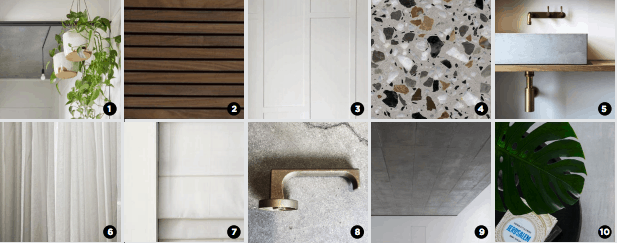
Buyers who wanted to buy an apartment in the first of the seven buildings in the precinct had to ballot for the privelige. The result: 150 buyers balloted for the 28 apartments on offer. This amounts to an oversubscription of 435%.
This is an incredible result for many reasons. The first, and most obvious is that home-buyers do not normally clamour to buy homes in eight-storey multi-residential buildings, which are seen as the poor cousin to a detached home in the ’burbs, or a townhouse. Second is that prices in the housing market are falling. And the third is that all the apartments in the Nightingale Village are subject to a restrictive covenant on their resale.
So why are buyers clamouring to buy into Nightingale Village?
A market for principles
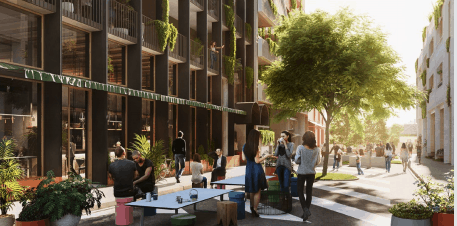
The design of Nightingale Village goes beyond the quality of its buildings. Entry into the Village involves buyers signing up to a variety of principles. The first is sustainability. All the buildings in the precinct are designed to be energy efficient. In the case of Skye House, this includes increased bike parking and no space for individually owned cars or personal electricity or water meters. Instead, buyers have access to a pool of 20 share cars housed in the basement of the building. Apartments share a
In other words, buyers have to sign up to the principles of sustainability and shared community facilities. This goes further.
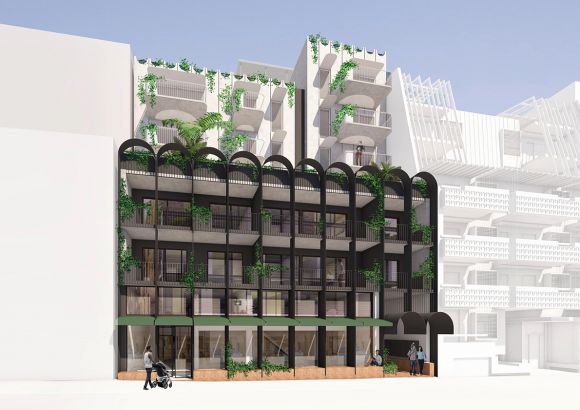
Twenty percent (eight) of the building’s 40 apartments were pre-allocated for community housing. Nightingale has allocated these apartments to two community housing management groups, Housing Choices Australia and Women’s Property Initiative (WPI), to buy and manage them, subject to funding.
The WPI has applied for funding to buy some of the eight apartments, says Caroline Larcher, project and development officer for WPI, and expects to find out if they are successful in early May.
WPI offers long-term accomodation for women and women-led households, Larcher says, not crisis or refuge services. WPI will own and manage the tenancies, but doesn’t provide services that tenants may need. “We work with local services,” she says.
The development is ideally suited to WPI, Larcher says, “We are delighted to have the opportunity to be involved and sincerely hoping we get the funding. Nightingale’s buildings are designed to minimise ongoing costs, which is important for low-income tenants. Also, the sense of shared space and community that we expect the village will
Most contravertially, buyers must sign up to the idea that housing is for living and not for speculating. A 20-year covenant on every apartment holds the resale price within certain constaints, including offering members of the Nightingale community first dibs on buying properties and holding the price to no more than 15% above the average sale price for the suburb.
Micro apartments in high demand
Skye House offered six micro-apartments, called Teilhaus by Breathe, a German word for part house, ranging in size from 28.3 square metres to 29.6 square metres plus balconies. The Teilhaus offering was an experiment, Breathe’s co-founder (with Tamara Veltre) and leader, Jeremy McLeod, said in pre-ballot information nights, to produce a product at a price Millenials could afford.
The indicative prices ranged from $215,000 to $295,000, with per square metre rates ranging widely between $7,586 (among the lowest) and $9,973 (near the highest of all apartments).
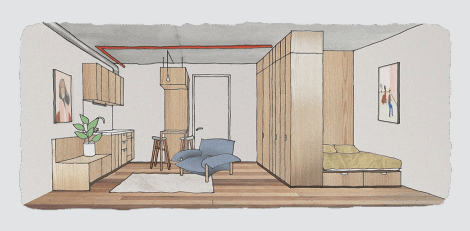
Demand for the Teilhaus apartments was particularly strong, says Nightingale Village’s contributing master planner, Andy Fergus.
However, as expected, Nightingale’s micro apartments come with add-ons: a shared bathhouse, equal access to the building’s shared guest apartment, and proximity to the roof garden and all other shared amenities.
Not all in the family
Four of the 12 pre-allocated apartments went to the Skye House project team staff at Breathe, including a two bedroom apartment for McLeod, who currently resides in The Commons, (Breathe Architecture’s first multi-residential building). Skye House also features a resident-owned guest house apartment for Skye House community guests.
But McLeod’s family and friends received no special preference in the ballot. All three of his daughters applied and none was successful. Andy Fergus, the master planner for the Nightingale Village, missed out in the ballot too, but confesses was only willing to take the apartment he balloted for. Many balloters indicated multiple preferences.
The three-person team (including McLeod as MD) at the non-profit organisation, Nightingale Housing, has a list of over 5000 people who have registered their interest in its projects.
Handling the tidal wave of interest is a challenge. When Dream Planet asked Nightingale’s team what they had learned from the first ballot, the hard work could be read between the lines:
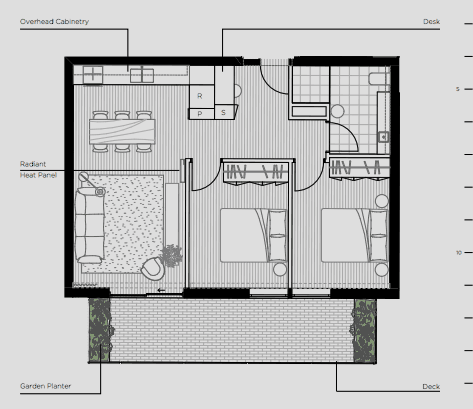
“As a small team, we have to be really careful about our resourcing and time management. Our biggest learning from the Skye House ballot is the need for scrupulous planning, clear access to information and really good communication leading up to and throughout the ballot process.”
Dream Planet thanks the team for taking the time to brief me on the result of the ballot.
A second chance
The ballot for second building in the village, by high-profile national architecture firm, Hayball, opened on 21 February and closes next week on March 13, so those who missed out on Skye House have a second chance.
Follow me

